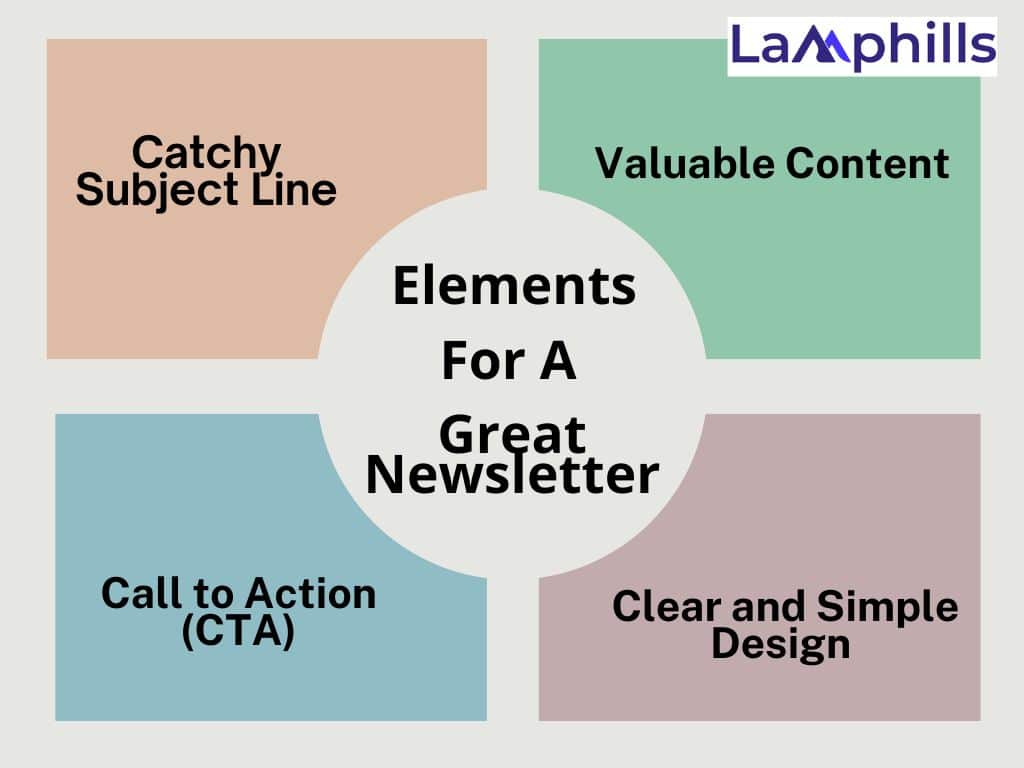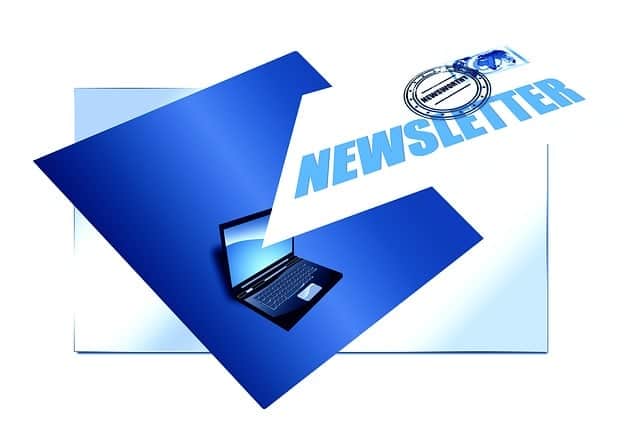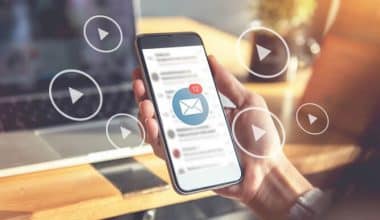Before we get to know “How to write a Newsletter,” let me quickly say this:
Email marketing is a powerful tool that really works, and it’s something you should be using. However, to make the most of it, you need to understand how it works and how to write emails that get results.
While statistics show that email marketing is effective, numbers only tell part of the story. Just sending out a newsletter to meet your weekly or monthly goal isn’t enough. You need to write emails that grab attention and drive action.
Your newsletter is a valuable marketing tool, and it’s time to treat it that way. Knowing the best strategies is important for running a successful email campaign. Getting people to notice, open, click, and respond to your emails can be tricky, but it’s not impossible.
In this blog post, we’ll show you how to make a newsletter your customers will actually want to read. Keep reading.
Key Points
- Using email to connect with your audience can bring great results if you know how to do it right.
- A catchy subject line is key to getting people to open your newsletter, so make it interesting!
- Your newsletter should provide useful tips, updates, and special offers that your readers want to know about.
- A clean and easy-to-read layout helps readers enjoy your newsletter without feeling overwhelmed.
- Encourage your readers to take action, like clicking a link or signing up for something, to keep them engaged and involved.
What is a Newsletter?
A newsletter is a type of email to your subscribers, that is, to people who sign up to receive updates from you. It usually includes interesting news, helpful information, or special offers related to your work or business. Newsletters are useful because they help keep your readers informed and can encourage more people to visit your website or check out what you’re offering.
For instance, imagine you run an online store that sells handmade jewelry. You can send a newsletter every month to your subscribers, sharing new product launches, special discounts, and tips on how to care for their jewelry. This way, you keep your customers interested and updated on what’s new.
What Makes a Good Newsletter? (5 Essential Elements for a Great Newsletter)

At first, writing newsletters used to be a huge challenge for me. There was always so much to cover, and I had several goals to reach, which often left me feeling tired. However, as I worked on more projects, I discovered that following a clear plan made things much easier.
Over time, I created a step-by-step process that not only made the work simpler but also helped me create interesting and effective newsletters. Before I show you these easy steps, let me first explain the 5 key elements you must include when writing a newsletter.
A great newsletter should be interesting, easy to read, and helpful for your audience. Here’s a simple breakdown of the 5 important parts:
#1. Catchy Subject Line
This is the first thing readers see in their inbox. It should grab their attention and make them curious enough to open the email. As an SEO content writer, I know how important headlines are in capturing interest. The same applies to subject lines. For example, if you’re sending a newsletter about crypto jobs, a subject line like “Top Crypto Job Opportunities You Can’t Miss” can catch your readers’ attention.
#2. Valuable Content
People open newsletters to find helpful information, tips, or special offers. Your content should be useful and relevant to your audience. Based on my job with articles and blog posts, I already know how to share valuable insights. For example, if you’re writing about loan apps in Nigeria, you could include a quick guide in your newsletter about “How to Choose the Best Loan App for Low Interest Rates.
#3. Clear and Simple Design
A good newsletter is easy to read. Keep the layout clean, use short paragraphs and clear headings, and add visuals if needed. You’ve already applied these principles when designing blog articles for better readability and SEO. In a newsletter, you can use this experience to make the text stand out and flow smoothly, just like you would with formatting articles.
#4. Call to Action (CTA)
A call to action is a simple sentence that tells the reader what to do next. Whether it’s clicking a link, signing up for something, or replying, make it easy for them to act. Since you often include action steps in your blog posts (like asking readers questions or suggesting further reading), you can use this to craft strong CTAs.
For instance, if your newsletter is about crypto trading strategies, a CTA like “Discover more tips, click here to read our full guide” works perfectly.
#5. Personal Touch
Readers connect more when a newsletter feels personal and friendly. Since you prefer a human-sounding tone for social media and blog content, use the same in your newsletters. Share a little story or experience related to the topic. For example, when sending a newsletter about Uber cars, you could start with a short story about how choosing the right car improved your friend’s Uber business. This builds a personal connection and keeps readers engaged.
In summary, a good newsletter includes:
- Useful information or practical tips
- Fresh ideas and insights
- A friendly and easy-to-understand tone
Now, let’s get into the art of writing effective email newsletters. As I said earlier, these are practical steps I use to write newsletters that provide value, keep readers interested, and achieve the results I want.
How to Write a Good Newsletter

Image by Gerd Altmann from Pixabay
It seems like everyone has a newsletter these days! Writing one isn’t hard, and with a few tips, you can make yours great. As long as you keep it engaging and full of helpful info, people will want to read it. Think about the newsletters you usually open. They’re probably clear, useful, and personal.
Step 1: Define Your Newsletter’s Purpose
The first step is to determine the purpose of your newsletter. Without a clear goal, it’s easy to get sidetracked and overwhelm your readers with too much information. For example, I once worked on a newsletter for an e-commerce brand that wanted to promote both its blog and new products. By focusing on promoting a single aspect and highlighting new product arrivals, we increased engagement significantly.
Whether your goal is to inform, sell, or engage, be specific. A clear purpose will help you stay focused and provide value to your readers.
Step 2: Understand Your Audience
Knowing your audience is crucial. I learned this while managing newsletters for various industries. A newsletter aimed at marketing professionals will look very different from one for fitness enthusiasts.
You can start by analyzing the interests of your subscribers and tailoring the content accordingly. Whether they prefer short, informative updates or more in-depth articles, delivering what your audience expects makes all the difference. With the right tone and focus, you’ll see better engagement.
Step 3: Choose the Right Format
Once you have a clear purpose and understanding of your audience, it’s time to choose the right format. Over the years, I’ve tried different formats, and what works best is keeping it simple and structured.
Typically, I follow this format:
- Headline: Captures attention and highlights the main takeaway.
- Intro: Briefly introduce the theme.
- Main sections: I like to break the content into 2-3 key points, making it easy to scan.
- CTA (Call to Action): Every newsletter needs a CTA, even if it’s just encouraging readers to click a link or reply.
A well-organized format makes it easier for readers to consume your content and take action.
Step 4: Craft a Strong Subject Line
The subject line is what gets your newsletter opened. I’ve noticed that when I personalize subject lines or add a little curiosity, the open rates improve. For example, instead of “Monthly Updates,” a subject like “New Strategies to Boost Your Productivity—Start Today!” tends to catch more attention.
Short, punchy, and clear subject lines are often the most effective. You can also A/B test different options to see what resonates best with your audience.
Step 5: Write Engaging Content
Writing content is where you provide real value. Whether you’re offering tips, sharing insights, or telling a story, keep it relevant to your audience. I remember when I shifted from writing long-winded articles to short, actionable tips in my newsletters—the feedback was instant. People appreciated the time-saving content that got straight to the point.
Engagement increases when readers feel like you understand their needs. Keep your message simple, provide solutions, and avoid cluttering the newsletter with too much information.
Step 6: Keep Design Simple
From my experience, a clean and basic layout works better than something too flashy. Focus on making it easy to read, use clear fonts, space out the sections, and add visuals that fit with the content. The most important thing is to make sure it looks good on mobile devices. Many people read emails on their phones, so check how it looks on different screens to give your readers the best experience.
Step 7: Include a Call to Action (CTA)
Your CTA (call to action) is what you want your readers to do after they finish reading your newsletter. It could be clicking a link, reading another article, or even replying to the email. At first, I wasn’t clear with my CTAs, which made people less engaged. Now, I always make sure the next step is simple and clear.
Whether it’s “Shop Now,” “Read More,” or “Reply to Share Your Thoughts,” a strong CTA helps get people involved and reach your goals.
Step 8: Review and Test
Before hitting “send,” always review your newsletter. I like to test it by sending it to myself or a colleague to ensure everything is working as expected. Check for broken links, design issues, or typos. A quick review can save you from small errors that can affect your credibility.
Also, look at the performance metrics, like open rates and click-through rates, to understand what works and what doesn’t. Over time, you’ll refine your approach based on what resonates with your audience.
Before you start writing your newsletter, it’s important to have a clear plan in place. To make things easier, I’ve put together a simple Newsletter Planning Checklist. This will guide you step-by-step, from defining your purpose to tracking how well your newsletter performs. Use this checklist to create newsletters that engage your audience and get results!
Expert Tips for Writing an Engaging Newsletter
It’s important to keep your members and partners informed about updates, news, and actions related to your work. You can choose to include these updates in your regular newsletters or create a new one.
You also have the option to send them out on a set schedule (like the first Tuesday of every month) or only when there’s something important to share.
Here are some helpful tips to remember when writing your newsletters:
#1. Write a catchy subject line
Your newsletter is competing with many other emails people get. Use the subject line to grab their attention and make them want to open and read it.
#2. Add a clear call to action
You don’t just want people to read about what you’re doing – you want them to do something! Use strong words, include links, and highlight important phrases to guide readers on what to do next.”
#3. Include Hyperlinks
Add links throughout your email to make it easy for your readers to find useful web pages. For example, put a link on your newsletter’s banner that leads to your homepage or another important page. This is helpful because readers often tap on images, banners, and buttons when reading emails on their phones or tablets, as these are easier to click than a link in the text.
#4. Keep it Short!
If you need to write something longer, post it on your website and include a short summary in your newsletter with a link to the full article. Make sure to put the most important information at the top of the email, not further down where people have to scroll.
#5. Use bullet points and lists.
Don’t hesitate to break up long text with bullet points or lists. When sharing a lot of information, break it into short, easy-to-read paragraphs after every few sentences.
#6. Use pictures
Try to include pictures whenever you can to make things more interesting. Make sure the pictures are clear and not blurry. As long as you have permission, you can use photos of real kids, families, and teachers from your community. You might also want to use stock photo services like istockphoto.com or shutterstock.com for more options and a professional look.
It’s best if a picture is the first thing people see when they open the email, with text underneath it. Photos should be wide, taking up the full width of the email, and in landscape format. Usually, one picture is enough, but you can also use three side-by-side (with text above them) that link to different web pages. Here’s an example.
#7. Stay flexible and track your progress
Try sending your newsletter at different times—morning, lunch, or early evening. Check which days and times get more people to open your emails, then adjust your schedule based on what works best.
Ins summary, creating a newsletter that grabs attention and keeps your audience engaged doesn’t have to be complicated. With a simple layout and clear messaging, you can create newsletters that people actually want to read.
To help you get started, I’ve created a basic newsletter template and an example that you can follow. This template breaks everything down into easy steps, from the subject line to the closing message.
Check out the template and example below to see how you can use this format for your own newsletters. It’s simple, clear, and effective, perfect for keeping your readers interested and coming back for more.
Feel free to use it, tweak it, and make it your own!
Tools to Write an Effective Newsletter
When creating an effective newsletter, there is software available to make the process easier and more professional. Whether you’re organizing your content, designing eye-catching visuals, or sending your emails at the right time, these tools can help you reach your audience more effectively.
Here are four basic tools that can help you write an effective newsletter:
#1. Email Service Providers (ESP)
An Email Service Provider is software that helps you send newsletters to a list of people, manage your subscribers, and track the performance of your emails. Popular ESPs include Mailchimp, ConvertKit, and Constant Contact.
Features:
- Email Templates: You don’t have to design from scratch because these tools provide ready-to-use templates.
- Subscriber Management: They help organize your email list, making it easy to send newsletters to the right people.
- Analytics: ESPs track how many people open your email, click on links, or unsubscribe, helping you improve your next newsletter.
Some examples of these tools are:
- Mailchimp: A popular tool that helps you send newsletters to your subscribers, offering templates and analytics.
- ConvertKit: A tool designed for bloggers and small businesses to send emails, manage subscribers, and track performance.
- Constant Contact: This tool helps you design newsletters and track how people interact with your emails.
I’ve worked with Mailchimp to send out newsletters for my blog. Its easy-to-use templates made it simple for me to create professional-looking emails quickly. Plus, its analytics helped me see which articles got the most attention, allowing me to improve my future newsletters.
#2. Content Management Tools
Content management tools like Google Docs or Notion are great for organizing and drafting your newsletter before you send it. These tools help you structure your content, collaborate with team members, and keep track of ideas.
Features:
- Collaboration: Multiple people can work on the same document at once, making it easy to gather feedback or ideas.
- Formatting: These tools offer formatting options to organize your newsletter content clearly and consistently.
- Autosave: Your work is automatically saved, so you don’t lose any content.
I often draft my newsletters in Google Docs before moving them to Mailchimp. Google Docs allows me to brainstorm ideas, format the content, and collaborate with team members, which makes the drafting process smooth and organized.
Examples are:
- Google Docs: A free tool for writing and organizing your newsletter content, with easy sharing and collaboration features.
- Notion: A tool that helps you organize content, take notes, and collaborate with others when planning your newsletters.
#3. Graphic Design Tools
Tools like Canva and Adobe Spark allow you to create eye-catching visuals for your newsletter. A visually appealing design is important because it can keep your readers engaged and make your newsletter look more professional.
Features:
- Templates: Canva provides templates for creating custom graphics, banners, or images, even if you’re not a designer.
- Drag-and-Drop: You can easily add elements like text or images to your designs with just a few clicks.
- Customizable Designs: You can change colors, fonts, and images to match your brand.
Examples are:
- Canva: A simple, drag-and-drop design tool that helps you create visuals for your newsletters, even if you’re not a designer.
- Adobe Spark: A user-friendly tool for creating professional-looking graphics and images for your newsletters.
#4. Scheduling Tools
Scheduling tools like Buffer or Hootsuite allow you to plan when to send out your newsletters. Timing is key to ensure your readers are more likely to open and engage with your content.
Features:
- Time Zone Optimization: These tools can send your newsletter at the best time for your audience, no matter where they are.
- Automation: You can set up your newsletters to go out automatically, which saves you time.
- Calendar View: They provide a calendar where you can plan and see when all your newsletters will go out.
Examples include:
- Buffer: A tool that allows you to schedule newsletters and social media posts in advance.
- Hootsuite: A platform that helps you plan and automate when your newsletters are sent out, ensuring they reach readers at the right time.
Using these tools, you can create, design, manage, and send effective newsletters that engage your audience and keep them coming back for more.
Conclusion
Writing a newsletter may feel tough at first, but with a clear plan and some practice, it becomes easy. Begin by deciding on your goal, understanding who your readers are, and creating helpful and interesting content. Keep the design simple, and always include something that encourages action. Most importantly, learn from each newsletter you send, and make changes based on feedback and the results you see.
Whether it’s your first newsletter or your hundredth, following these steps will help you succeed. Once you get used to it, sending a newsletter will feel natural.
Frequently Asked Questions.
What are the 3 key parts of creating a great newsletter?
Only 20% of your content should promote something! The rest should focus on three main areas: teaching, inspiring, and entertaining your readers. This is great news for you!
What is a newsletter and an example?
A newsletter is a way for businesses and organizations to send important and helpful information to their customers, potential clients, and subscribers. It lets you send content straight to their email inbox, where you can share interesting updates, promote products or sales, and bring more people to your website.
How do you introduce yourself in a newsletter?
When writing the introduction for a welcome email, start by sharing who you are and what you do. This helps readers get to know you better and understand where you’re coming from. Then, explain why you decided to start your newsletter.
What is the structure of a newsletter?
A newsletter usually begins with a friendly greeting, followed by a brief introduction to the topic. Then, it includes short, clear sections (up to 5). The language should be simple and easy to understand, clearly explaining the main reason for the newsletter in just a few sentences.
How long is a newsletter?
Newsletters can be different sizes, but the most common size is like a regular letter. They usually have between 1 and 4 pages, and it’s rare to see one longer than 12 to 24 pages.
How do you title a newsletter?
Start by making a list of words that include your name, topic, and special approach. It can help to look at lists of adjectives, phrases, and action words. Don’t worry about getting it perfect right away. Even if you don’t love a word or phrase, write it down—it might lead to a better idea later on.
How to Make Your Newsletter More Engaging?
Tip: Try adding quotes, tweets, or links to content from your partners or favorite brands to make your newsletter more interesting. Working with others can also help you grow your list of subscribers. Really Good Emails collects useful content from the industry to give extra value to their readers.
Similar Articles.
How to Write a Marketing Email: A Step-by-Step Guide for 2024
The Ultimate Guide to Social Media Branding: Tips for Creating Your Online Identity
How to Write the Perfect Press Release: My Tips on Formatting
How to Write News Releases: Free Tips and Examples






